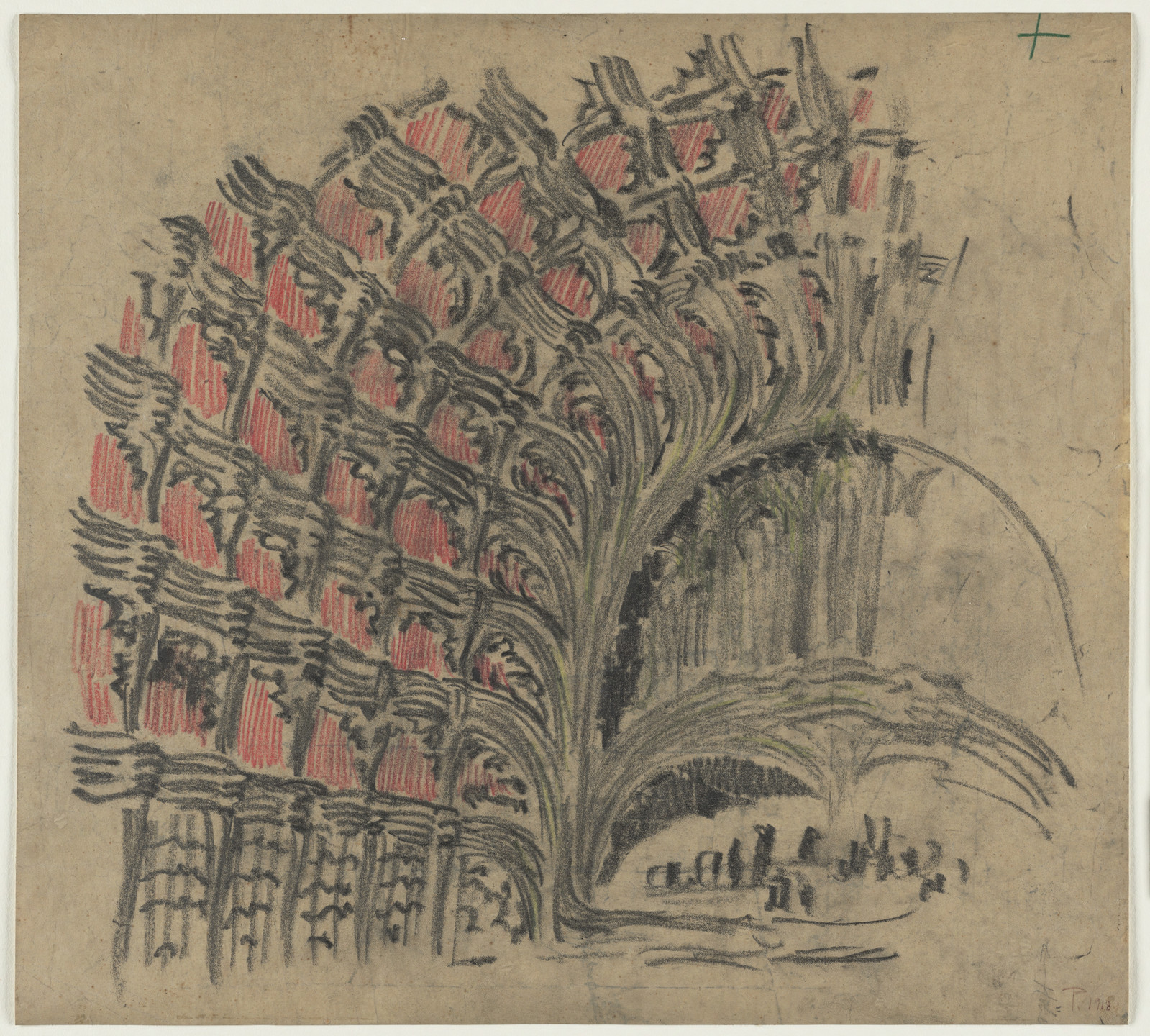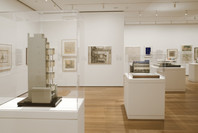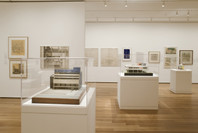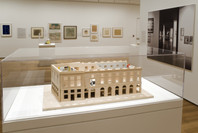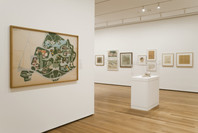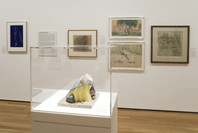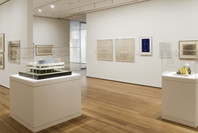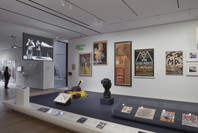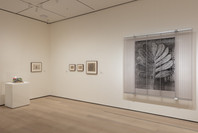Hans Poelzig made this drawing for a concert hall while he was the city architect of Dresden, a position he held from 1916 to 1920. A painter and set designer as well as an architect, he searched for personal and emotional architectural forms. Natural, organic, plantlike elements create a fanciful and romantic setting, and almost baroque ornamental patterns radiate from the stage, their rhythm evoking the music they were designed to house.
Gallery label from Making Music Modern: Design for Ear and Eye, November 15, 2014–January 17, 2016.
Hans Poelzig made this drawing for a concert hall while he was the city architect of Dresden, a position he held from 1916 to 1920. A painter and set designer as well as an architect, he was then at the beginning of the Expressionist phase for which he is best known. Stressing the subjective over the objective, Expressionist architects such as Poelzig, Bruno Taut, and Hans Scharoun searched for personal and emotional architectural forms, and their designs had a dynamic quality that reflected or commented upon the building's intended function and revealed inner meaning through structure.
The forms of Expressionist architecture tended to be symbolic and visionary-often literally so, in that, because of World War I, and Germany's depressed economic situation in the years that followed it, Poelzig and his peers produced more paper architecture than built work. Yet Poelzig, although he relentlessly sketched anything that caught his eye, felt that sketching "as an end to itself began the ruination of architecture." The drawing for its own sake that occurred in the academies, he believed, ran to excess, and resulted in a loss of architectonic culture and, for architects, a loss of feeling for three-dimensional space. Even so, and however Poelzig's Concert Hall might have been realized, this detail has its own stature. Natural, organic, plantlike forms create a fanciful and romantic setting, and almost baroque ornamental patterns radiate from the stage, their rhythm evoking the music they were designed to house.
Publication excerpt from an essay by Bevin Cline, in Matilda McQuaid, ed., Envisioning Architecture: Drawings from The Museum of Modern Art, New York: The Museum of Modern Art, 2002, pp. 48-49.
